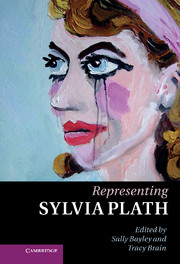Book contents
- Frontmatter
- Contents
- Illustrations
- Notes on contributors
- Acknowledgements
- Abbreviations
- Introduction
- Part I Contexts
- Part II Poetics and composition
- Chapter 5 ‘The trees of the mind are black, the light is blue’
- Chapter 6 Coming to terms with colour
- Chapter 7 ‘Madonna (of the Refrigerator)’
- Chapter 8 ‘Procrustean identity’: Sylvia Plath’s women’s magazine fiction
- Part III Representation
- Bibliography
- Index
- References
Chapter 8 - ‘Procrustean identity’: Sylvia Plath’s women’s magazine fiction
from Part II - Poetics and composition
Published online by Cambridge University Press: 07 September 2011
- Frontmatter
- Contents
- Illustrations
- Notes on contributors
- Acknowledgements
- Abbreviations
- Introduction
- Part I Contexts
- Part II Poetics and composition
- Chapter 5 ‘The trees of the mind are black, the light is blue’
- Chapter 6 Coming to terms with colour
- Chapter 7 ‘Madonna (of the Refrigerator)’
- Chapter 8 ‘Procrustean identity’: Sylvia Plath’s women’s magazine fiction
- Part III Representation
- Bibliography
- Index
- References
Summary
Sylvia Plath wrote fiction for women’s magazines throughout her career. From her early successes in Seventeen and Mademoiselle as a high school and college student through to the last eighteen months of her life, in which she was submitting stories to British women’s magazines, Plath harboured a constant ambition to publish fiction in the women’s magazine market. Ted Hughes wrote, ‘Her ambition to write stories was the most visible burden of her life.’ Plath wanted the money, the freedom and the professional self-respect, he added, that came from mastering the craft of writing and selling fiction: ‘Her life became very early a struggle to apprentice herself to writing conventional stories, to hammer her talents into acceptable shape.’ Plath wrote a considerable body of women’s magazine fiction, which has received very little critical discussion. In 1955, she wrote the three stories, ‘The Smoky Blue Piano’, ‘Platinum Summer’ and ‘The Christmas Heart’, and submitted them to a range of women’s magazines. In 1957, she wrote and submitted a further four, ‘The Laundromat Affair’, ‘The Fabulous Room-Mate’, ‘The Trouble-Making Mother’ and ‘Operation Valentine’ (familiar to readers of Plath’s journals as the story about a mother’s helper to which she frequently refers). Only the first and last of these four stories are now extant, and those only in fragments. In Britain, in 1960 and 1961, Plath wrote four more stories for the British market, ‘The Lucky Stone’, ‘Day of Success’, ‘Shadow Girl’ and ‘A Winter’s Tale’. The first of these was the only one of her stories ever accepted for publication by a women’s magazine, appearing (under the title ‘The Perfect Place’) in My Weekly in October 1961. In this chapter, I will discuss the stories Plath wrote for the American women’s magazine market. I will argue that they are best understood in the cultural context of the discourse of the magazines for which they were written. Plath’s women’s magazine fiction, I will claim, is a complex and contradictory body of writing, and it derives these qualities from the features, adverts and stories of the magazines of which she intended it to be a part.
- Type
- Chapter
- Information
- Representing Sylvia Plath , pp. 147 - 164Publisher: Cambridge University PressPrint publication year: 2011

